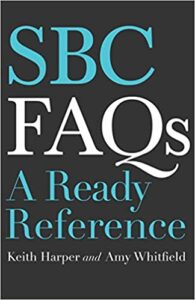 SBC FAQs: A Ready Reference (B&H Academic, 2018), by Amy Whitfield and Keith Harper, is a nice and neat introduction to the Southern Baptist Convention. Part 1 (pgs. 1-52) contains a series of questions and answers, ranging from “What is the Southern Baptist Convention?” to “What is the Baptist Faith and Message?” Part 2 (pgs. 53-134) contains various SBC documents: charter, constitution, bylaws, business and financial plan, and the Baptist Faith and Message. I recommend this book to Independent Baptists to see just how denominational Southern Baptists are, and to instruct their congregations accordingly.
SBC FAQs: A Ready Reference (B&H Academic, 2018), by Amy Whitfield and Keith Harper, is a nice and neat introduction to the Southern Baptist Convention. Part 1 (pgs. 1-52) contains a series of questions and answers, ranging from “What is the Southern Baptist Convention?” to “What is the Baptist Faith and Message?” Part 2 (pgs. 53-134) contains various SBC documents: charter, constitution, bylaws, business and financial plan, and the Baptist Faith and Message. I recommend this book to Independent Baptists to see just how denominational Southern Baptists are, and to instruct their congregations accordingly.
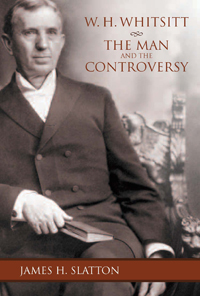 After you are finished reading about Crawford Toy, you might want to dive into W. H. Whitsitt: The Man and the Controversy (Mercer University Press, 2009), by James H. Slatton. Begin by reading or rereading chapter 5 of Southern Baptist Theological Seminary 1859-2009 that I mentioned in my previous post. Toy and Whitsitt were bachelor roommates when they were professors at Southern Seminary. Whitsitt later served as president of the seminary from 1895-1899. Like Toy, Whitsitt studied in Germany, and like Toy, was forced to resign, this time over his controversial views on the historical origins of Baptists. After leaving Southern Seminary, Whitsitt taught at the University of Richmond from 1901 until his death in 1911. The antidote to Whitsitt’s views was published while he was still the seminary president: Did They Dip? or An Examination into the Act of Baptism as practiced by the English and American Baptists before the Year 1641 (Baptist Book Concern, 1896), by John T. Christian. I am pleased to say that I own an original copy.
After you are finished reading about Crawford Toy, you might want to dive into W. H. Whitsitt: The Man and the Controversy (Mercer University Press, 2009), by James H. Slatton. Begin by reading or rereading chapter 5 of Southern Baptist Theological Seminary 1859-2009 that I mentioned in my previous post. Toy and Whitsitt were bachelor roommates when they were professors at Southern Seminary. Whitsitt later served as president of the seminary from 1895-1899. Like Toy, Whitsitt studied in Germany, and like Toy, was forced to resign, this time over his controversial views on the historical origins of Baptists. After leaving Southern Seminary, Whitsitt taught at the University of Richmond from 1901 until his death in 1911. The antidote to Whitsitt’s views was published while he was still the seminary president: Did They Dip? or An Examination into the Act of Baptism as practiced by the English and American Baptists before the Year 1641 (Baptist Book Concern, 1896), by John T. Christian. I am pleased to say that I own an original copy.
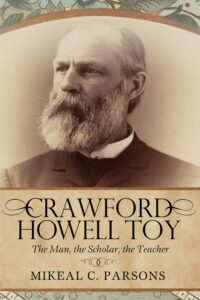 I have finally finished reading Crawford Howell Toy: The Man, the Scholar, the Teacher (Mercer University Press, 2019), by Mikeal C. Parsons, the professor and Macon Chair in Religion at Baylor University. Toy (1836-1919) was Professor of Old Testament and Hebrew at the Southern Baptist Theological Seminary in Louisville, Kentucky, from 1869 until he was forced to resign in 1879 for his liberal theological views. Toy then served as the Hancock Professor of Hebrew and Other Oriental Languages at Harvard from 1880-1909. He eventually left the Baptists and became a Unitarian. The book is a both a fascinating and a captivating read. I only stopped reading it at times because of pressing writing commitments. If you are a Baptist
I have finally finished reading Crawford Howell Toy: The Man, the Scholar, the Teacher (Mercer University Press, 2019), by Mikeal C. Parsons, the professor and Macon Chair in Religion at Baylor University. Toy (1836-1919) was Professor of Old Testament and Hebrew at the Southern Baptist Theological Seminary in Louisville, Kentucky, from 1869 until he was forced to resign in 1879 for his liberal theological views. Toy then served as the Hancock Professor of Hebrew and Other Oriental Languages at Harvard from 1880-1909. He eventually left the Baptists and became a Unitarian. The book is a both a fascinating and a captivating read. I only stopped reading it at times because of pressing writing commitments. If you are a Baptist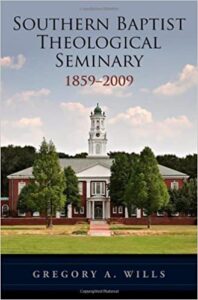 and are not familiar with Toy, then I recommend that you first read the first four chapters of Southern Baptist Theological Seminary 1859-2009 (Oxford, 2009), by Gregory A. Wills, then read the biography of Toy, and then go back and finish the Wills book, which I highly recommend in its entirely. Toy’s downfall, like so many others, was his embrace of higher criticism when he studied in Germany.
and are not familiar with Toy, then I recommend that you first read the first four chapters of Southern Baptist Theological Seminary 1859-2009 (Oxford, 2009), by Gregory A. Wills, then read the biography of Toy, and then go back and finish the Wills book, which I highly recommend in its entirely. Toy’s downfall, like so many others, was his embrace of higher criticism when he studied in Germany.
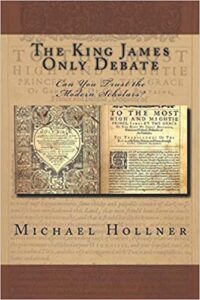 (Read part 1, part 2, part 3, part 4, part 5, part 6). Part 7 will cover chapter 4, “Answering the Critics.” This is the last of just three chapters that have the same title as that listed in the table of contents. As Hollner states at the very beginning: “This chapter is specifically devoted to questions that were asked of us by a ministry called CAnswersTV” (p. 135). There are seventeen questions, each of which is followed by a “preacher response” and a “scholar response,” both written by Hollner. The preacher responses are usually much shorter than the scholar responses. I am not sure about Hollner’s preaching abilities, but he is certainly no scholar. At the end of question and answers 6 and 11, there is a “golden nugget” by Hollner that can, of course, be ignored. After the seventeen questions and answers, Hollner answers eleven additional questions by an unidentified “scholar follower.” The way the questions are worded, I would not be surprised if Hollner wrote them himself.
(Read part 1, part 2, part 3, part 4, part 5, part 6). Part 7 will cover chapter 4, “Answering the Critics.” This is the last of just three chapters that have the same title as that listed in the table of contents. As Hollner states at the very beginning: “This chapter is specifically devoted to questions that were asked of us by a ministry called CAnswersTV” (p. 135). There are seventeen questions, each of which is followed by a “preacher response” and a “scholar response,” both written by Hollner. The preacher responses are usually much shorter than the scholar responses. I am not sure about Hollner’s preaching abilities, but he is certainly no scholar. At the end of question and answers 6 and 11, there is a “golden nugget” by Hollner that can, of course, be ignored. After the seventeen questions and answers, Hollner answers eleven additional questions by an unidentified “scholar follower.” The way the questions are worded, I would not be surprised if Hollner wrote them himself.
Hollner is hopelessly confused about the meaning of the words “reprints” and “revisions” (pgs. 137, 139). He is likewise confused about manuscripts and texts and editions (p. 142). Twice in this chapter, Hollner gives the wrong number of words in the Bible (pgs. 140, 169). He implies, wrongly, that the Apocrypha was removed from King James Bibles published after 1611 (p. 141). The King James translators did not have available “thousands of other resources” (p. 142). The word “nonsense” is misspelled “nonsence” (p. 143). It is bad enough that Hollner underlines so many words, but it is inexcusable that his underlines continue past the words that are underlined (p. 144). Modern versions don’t “change every few years by order of the Vatican” (p. 147). What Hollner says about the King James Version and copyright should be corrected by what I say in my book King James, His Bible, and Its Translators (pgs. 160-161). Throughout this chapter, Hollner can’t decide on the format to use to refer to numbered centuries, even on the same page (p. 155): “10th Century” and “7th century.” The NAS should be the NASB (p. 152). Hollner’s needless capitalization of so many words in this chapter is very annoying, as is his mixed use of straight and curly quotation marks. Stay tuned for the eighth installment.
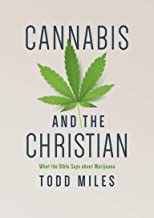 My review of Cannabis and the Christian: What the Bible Says about Marijuana (B&H Publishing, 2021), by Todd Miles, was recently published at LewRockwell.com. I have reviewed a few other books on the subject of marijuana, but not one from a Christian perspective.
My review of Cannabis and the Christian: What the Bible Says about Marijuana (B&H Publishing, 2021), by Todd Miles, was recently published at LewRockwell.com. I have reviewed a few other books on the subject of marijuana, but not one from a Christian perspective.